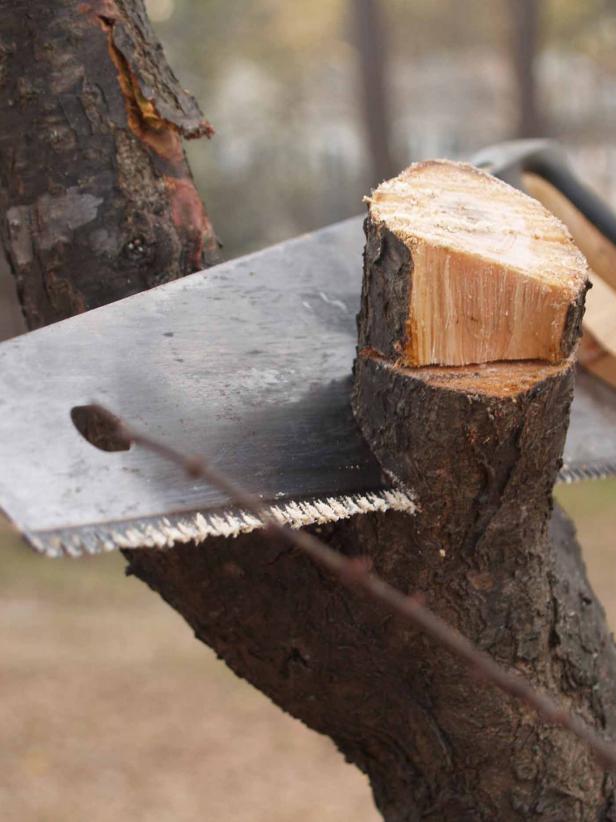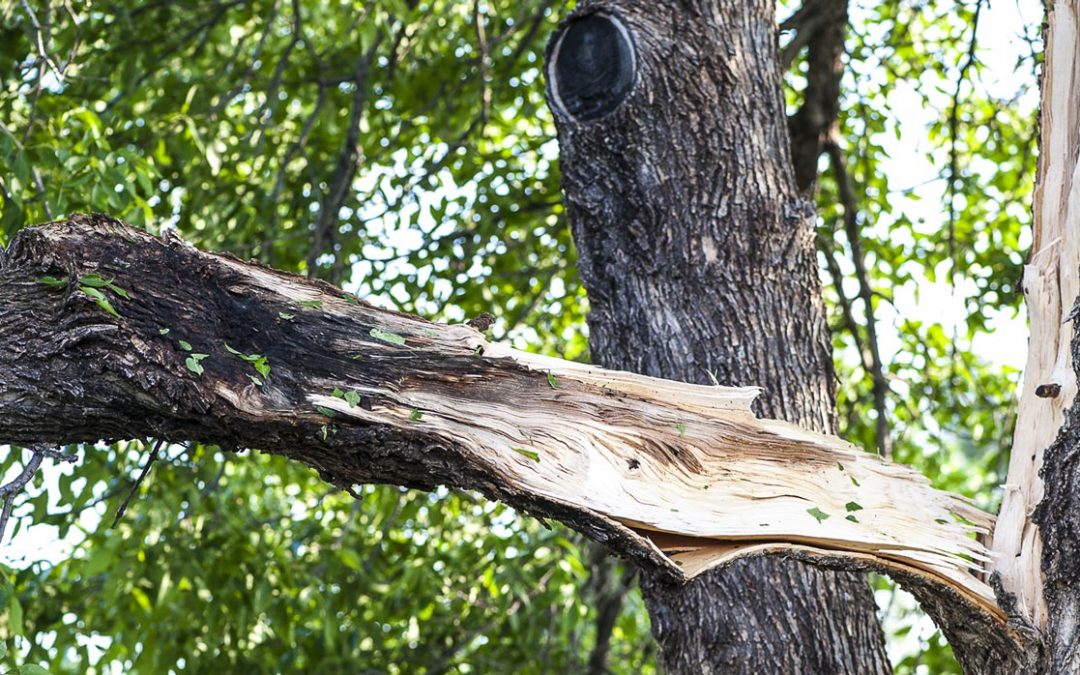To speed up healing from storm damage, remove the stub of a damaged limb close to the tree trunk.
Gardening expert and certified wit Felder Rushing answers your questions and lays down some green-wisdom.
I feel terrible for those who lost everything in this week’s hurricane, when all I have is one tree that split in half and crushed some shrubs underneath. But what can I do to help my tree get over the damage? Should I use pruning paint over the broken area?
Storm damage to trees, whether from high winds, heavy rains, ice or any other disastrous weather conditions, is difficult to repair even for trained tree professionals, because plants don‘t heal like people. Instead of shedding the damage and growing replacement tissue, plants simply form new growth around the broken areas; if this takes too long, insects and diseases can get in and cause even more damage down the road. To help your plants get over the damage quickly, try to remove as much of the jagged or torn branches and limbs as you can, in a way that promotes faster healing. Here’s how:
For small limbs and branches, simply cut them off right where they sprout from something else, leaving no stubs which will rot into the center of the limb rather than heal quickly.For larger limbs and branches, make a little more effort by making three cuts — one to start a small slit on the underside of limbs to keep bark from peeling all the way down the trunk; remove the limbs with a second cut out beyond the first bottom cut. The third cut is to remove the stub to help speed up the healing process. Again, it is important to not leave any stubs.
Pruning Paints are Mostly Cosmetic
Tar-based pruning paints and tree wound treatments are used almost entirely for cosmetic purposes — if for nothing more than to help neighbors think you know what you are doing. However, if used quickly they can keep out moisture and blowing dirt. Which can help reduce decay down the road. But use them immediately — the benefits are lost if your cuts are more than a few days old, or after a rain or two gets on the exposed wood.Your shrubs can be pruned as well, even when late in the season. Clean up broken branches and cut everything else back uniformly but in a natural shape, and next spring new growth can come out just fine. And because the roots of your shrubs are probably still intact, the shrubs will actually grow very quickly.
Help please! I have just found a large, rubbery, fungus on a stump in the back of my lily garden. How do I kill the fungus and what do I need to do to the soil for the rest of my plants? I am lost on this. I have never seen anything like this and I have gardened my whole life, and I am older than dirt. Thanks. — Jean
Jean, there are many different fungi even in great gardens, but they rarely cause serious problems to living plants. Typically, they feed on dead plants, partially-decayed leaves, mulch or rotten wood (like the old stump). This makes them important “players” in the natural composting process.Yours is a wood-decay fungus that is rotting the stump and its dead roots. They may last quite awhile, so get ready for the long haul. You can cut the stump down some more, or even break off the rubbery “conks” — or just admire it as a neat member of the garden‘s underworld.Since these kinds of fungi don’t really harm healthy plants — including your lilies — there is no need to worry or spray a fungicide. If you see smaller, more traditional mushrooms, appearing in your mulch, simply rake the area really well and add fresh mulch.


